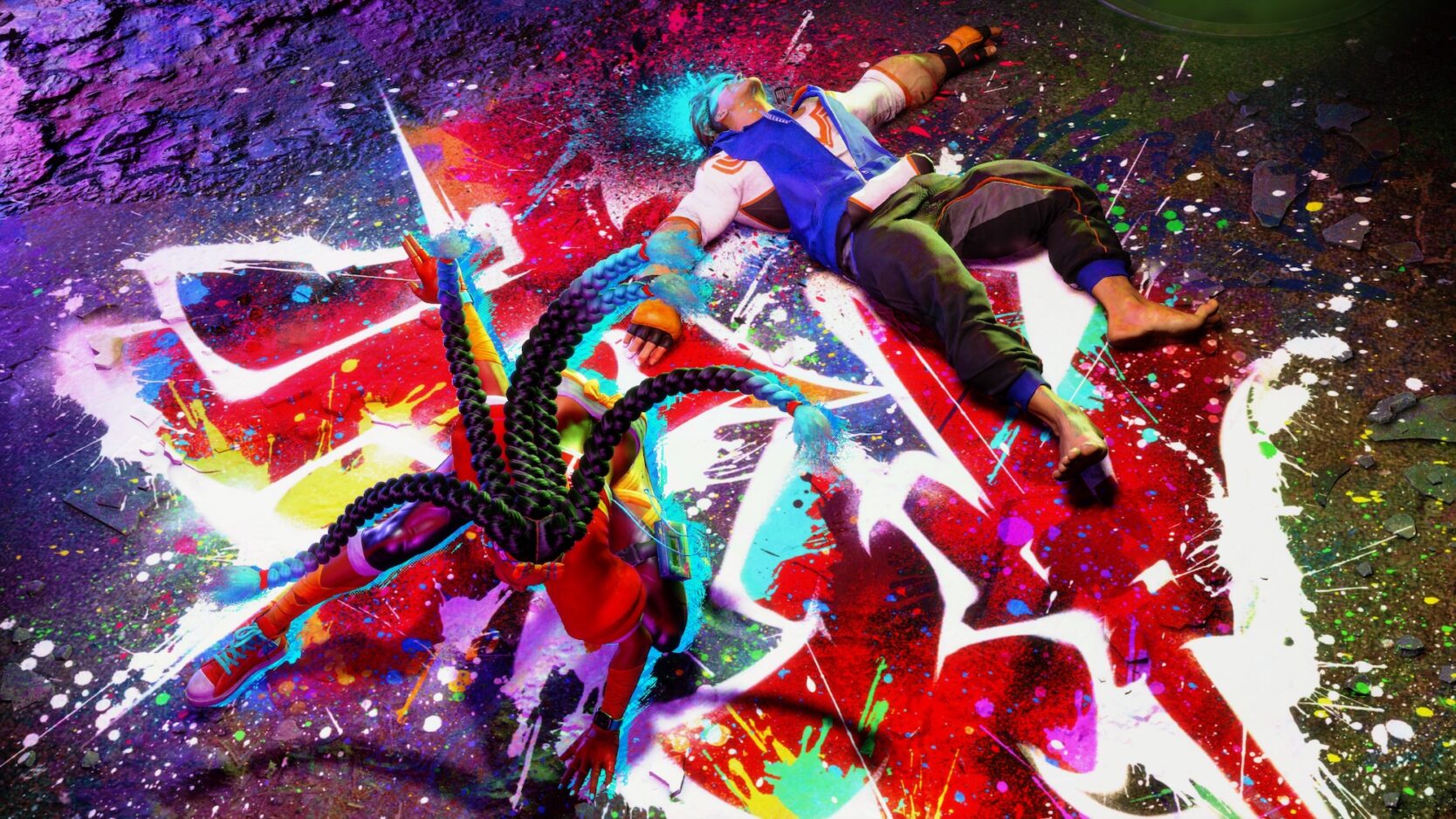As we’ve previously discussed, there are very very few names in video games as big and as culturally relevant as Street Fighter. Since Street Fighter II launched in 1991 and transformed the fighting game world, Capcom’s flagship series has maintained its spot as the king of the genre.
Now, as we inch toward Street Fighter 6 — the first title designed for the current generation of consoles — the series looks to continue to build on the success that some of Capcom’s other properties (like Resident Evil and Monster Hunter) have seen since Street Fighter V released in 2016. With a new visual flair and a more modern “urban” aesthetic, the series is branching out in directions it hasn’t entirely explored before — all while maintaining the tight gameplay and genre-defining features that the series is known for..
To dig into more info about the upcoming title, SPIN spoke with Street Fighter 6’s producer Shuhei Matsumoto and lead composer Yoshiya Terayama through a translator after fighting games’ biggest weekend, the Evolution Championship Series.
SPIN: What can people expect from Street Fighter 6, both for fans of previous games and newcomers to the series?
Shuhei Matsumoto: First of all, Street Fighter 6 is very respectful of past works, such as the original Street Fighter and Street Fighter II. We are taking on new challenges while honoring that foundation. Also, you can definitely expect hip hop. We put a lot of effort into how it sounds, so let’s hear what Terayama-san has to say about that.
Yoshiya Terayama: The music for Street Fighter 6 is intended to be unique in that it is in the lineage of the Street Fighter series while also representing a new generation for the series. World Tour [Street Fighter 6’s single-player story mode] features Metro City, which includes elements that will please fans of the Final Fight series. Beginners will enjoy a fresh gaming experience, and fans of the previous games will be able to experience the classic Street Fighter atmosphere throughout the game.
From a cultural standpoint, how does Street Fighter 6 evolve the franchise in new directions?
Terayama: Fighting games can be appreciated in their own unique ways, and with the Street Fighter 6 soundtrack, our goal is to create music that everyone can enjoy and groove out to. It would make me so happy if people see this as an evolution of the franchise.
Matsumoto: No doubt. You are really free to decide how you want to enjoy Street Fighter, and it doesn’t matter how strong you are competitively. The most important thing is to like Street Fighter, which is why we are evolving with Street Fighter 6 to make it easier to play and enjoy.
How does hip hop and the game’s more urban setting and appearance play into Street Fighter 6?
Terayama: The music of Street Fighter 6 is heavily influenced by hip-hop culture. It respects and blends the melodious game music that has been passed down through the series with the various musical elements derived from hip-hop culture.
Matsumoto: A couple good examples of how Street Fighter has shown its hip-hop influences are the graffiti in the intro cinematic in the original Street Fighter as well as the hip-hop sounds of Street Fighter III. After all, “Street” is in the title [laughs]. Graffiti, dance, rap, and DJ sounds — I want to include all four of these major elements firmly in Street Fighter 6.
With Street Fighter’s stature as one of the biggest fighting games, is there pressure to live up to the expectations of fans and critics when releasing a new installment?
Terayama: This time, as a major challenge, we are renewing the theme songs of the characters. We have created music based on the concept of what it would be like if each of the characters appeared on the streets. Since music throughout the series has been loved by many, we feel pressure to create something new, rather than just a new arrangement.
Matsumoto: As Terayama-san said, there is a lot of pressure to take on new challenges. But the members of the Street Fighter 6 development team have been so creative that they have been able to overcome that pressure. And our director, [Takayuki] Nakayama-san, is just the best. Street Fighter 6 is the result of our efforts to create what we wanted to do. We are grateful for the awesome response we’ve received from everyone so far.
Considering that Street Fighter is truly a global title at this point, how much consideration goes into including culture from all around the world?
Terayama: When it comes to the music, we incorporate the culture and art of each country we represent. This may be a bit off topic, but if you were to ask how we incorporate the artistic elements of each country into the music, the instruments and techniques used are so important because they remind us of the history and culture of each country, and we try to make that mesh with the art direction of Street Fighter 6.
Matsumoto: We have incorporated the styles of the characters themselves along with the essence of the countries they originate from. I hope people will play and experience how we have incorporated these elements into the Street Fighter universe.
Street Fighter 6 Brings Modern Style and Hip-Hop Culture to the Iconic Franchise
The first current-generation Street Fighter is due out next year

Paint splashes, pops of color and hip-hop culture highlight Street Fighter 6.



